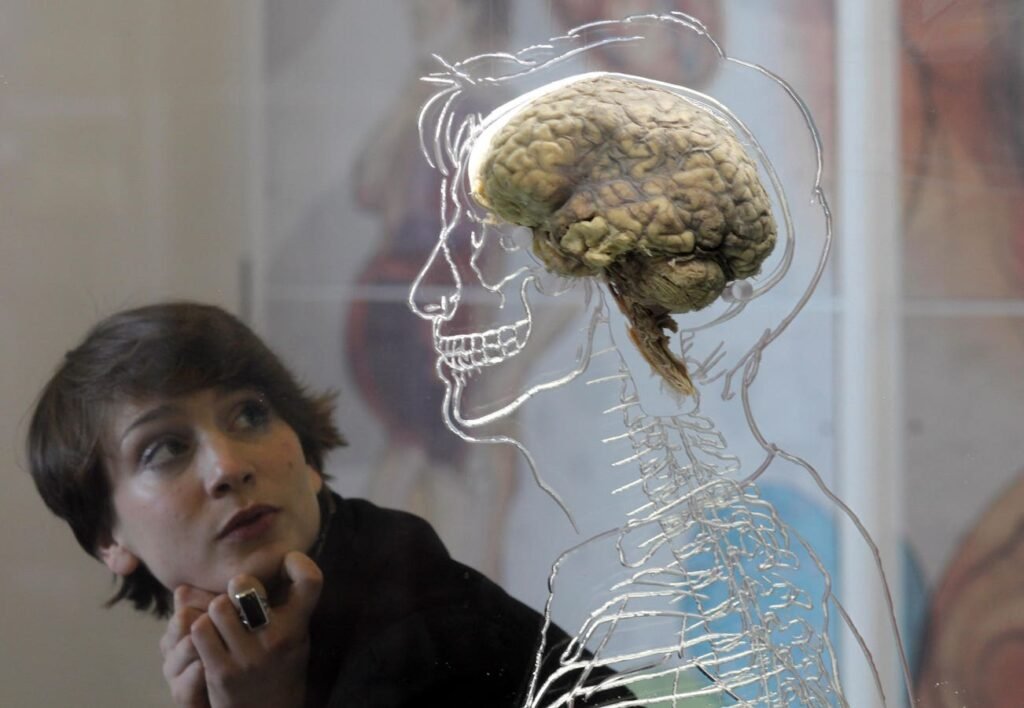BRISTOL, UNITED KINGDOM – MARCH 10: Photo by Matt Cardy/Getty Images
In today’s fast-paced work culture, the traditional boundaries between professional and personal life are increasingly blurred. The idea of work-life balance—where work and personal time are neatly divided—has given way to a more dynamic model: work-life integration. But what does science say about how our brains adapt to this shift?
As researchers uncover the neuroscience of stress, rest and productivity, one thing becomes clear: our brains are not designed for constant busyness but thrive on purpose-driven work. Understanding how to structure, work and rest harmoniously with our brain’s natural rhythms can unlock greater productivity, mental well-being, and long-term success.
How the Brain Processes Work And Rest
At the core of work-life integration is the idea that productivity is not about working more—it’s about working smarter, aligning with our brain’s biological rhythms. Neuroscientists have identified two key cycles that play a significant role in our mental energy and focus:
The Circadian Rhythm: The 24-Hour Energy Cycle
Our brain’s circadian rhythm regulates wakefulness and sleep, determining when we’re naturally most alert or fatigued. Peak cognitive performance usually occurs mid-to-late morning and again in the early evening, while our energy naturally dips in the early afternoon. Disrupting this rhythm—such as working late into the night or skipping rest periods—leads to decreased mental clarity, stress accumulation and long-term burnout.
The Ultradian Rhythm: The 90-Minute Productivity Cycle
Within the larger circadian cycle, our brain operates on ultradian rhythms, which last about 90 minutes. After this period of intense focus, our brain needs a 15–20 minute recovery phase.
Hence, working in 90-minute blocks with breaks in between leads to higher productivity and better mental endurance than continuous work without breaks. Ignoring these natural cycles can lead to cognitive overload, decision fatigue, and stress accumulation.
The Neuroscience of Stress And Work-Life Conflict
When work and life feel in competition rather than harmony, the brain shifts into a chronic stress state, triggering the release of cortisol and adrenaline. While short-term stress can be motivating, prolonged exposure to these stress hormones can have serious consequences:
- Impaired cognitive function: Chronic stress weakens the prefrontal cortex, the part of the brain responsible for decision-making and focus.
- Increased anxiety and burnout: Overwork activates the amygdala, increasing emotional reactivity and reducing the brain’s ability to regulate stress.
- Weakened memory and learning: Stress damages the hippocampus, the area responsible for memory formation and problem-solving.
- The key to preventing these effects is intentionally integrating work and personal life to support the brain’s need for focus and recovery.
The Power of Strategic Rest And Recovery
Rest is often seen as the opposite of productivity, but neuroscience tells a different story. Rest is a productivity multiplier, enabling higher cognitive performance, creativity, and problem-solving abilities. Here’s how:
Sleep: The Brain’s Most Powerful Reset Button
Sleep is essential for memory consolidation, emotional regulation, and mental clarity. The brain undergoes “neural housekeeping” during deep sleep, clearing out toxins and strengthening neural connections. Skipping sleep to get more work done results in lower efficiency, poor decision-making, and reduced creativity the next day.
Movement And Exercise: Boosting Brain Plasticity
Physical activity increases blood flow to the brain, enhancing concentration, mood and resilience to stress. Short bursts of movement (such as a walk or stretching) during work breaks help reset the brain for better focus.
The Default Mode Network (DMN): The Brain’s Innovation Hub
When we allow our minds to wander—such as during a walk, shower, or meditation—the brain shifts into the Default Mode Network (DMN). The DMN is responsible for creativity, deep insights and problem-solving, which is why breakthrough ideas often come up when we’re not actively thinking about them. Overworking without moments of rest blocks access to this creative state, reducing innovation and big-picture thinking.
Designing Work-Life Integration for Optimal Brain Function
Given what we know about the brain, how can we structure work and life to enhance well-being and productivity? Here are some science-backed strategies:
- Align Work with Your Natural Energy Peaks: Schedule deep-focus tasks (writing, strategy, problem-solving) during peak alertness (mid-morning, early evening). Also, save low-energy tasks (emails, administrative work, meetings) for energy dips (early afternoon).
- Work in Ultradian Cycles (90-Minute Blocks): Use the 90-minute work, 20-minute rest approach to prevent burnout and maintain high mental clarity. During breaks, engage in brain-refreshing activities like walking, stretching or meditation.
- Leverage Active Recovery (Instead of Passive Rest): Instead of scrolling on social media or watching TV during downtime, engage in mindful recovery like yoga, journaling or nature walks. Active rest helps reset the brain, while passive activities can often drain mental energy further.
- Set Clear Work-Life Transitions: Work can consume personal time without clear boundaries, keeping the brain in constant task engagement. Create end-of-day rituals (shutting down the laptop, going for a walk, playing music) to signal the brain that work has ended.
- Prioritize Sleep and Stress Reduction Practices: Aim for 7–9 hours of quality sleep to allow the brain to recharge and optimize cognitive performance fully. Moreover, stress-reducing habits such as deep breathing, mindfulness or time spent in nature could be implemented to prevent mental exhaustion.
A New Way Forward: Rethinking Work-Life Success
Indeed, working harder does not mean working better. Actual productivity comes from understanding the brain’s natural rhythms, allowing for deep work and intentional rest. As the modern workforce evolves, companies and individuals could benefit from rethinking what success looks and feels like.
Organizations that embrace work-life integration—offering flexible schedules, mental health support and a culture of rest as a performance tool—will see higher creativity, innovation and employee retention. For individuals, the key is to design work and life in a way that supports—not fights against—our brain’s natural functioning.
When work and life are integrated in a way that respects the science of energy, stress and recovery, we can achieve both professional fulfillment and personal well-being. The future of work isn’t about balance—it’s about integration that supports the brain’s full potential.


